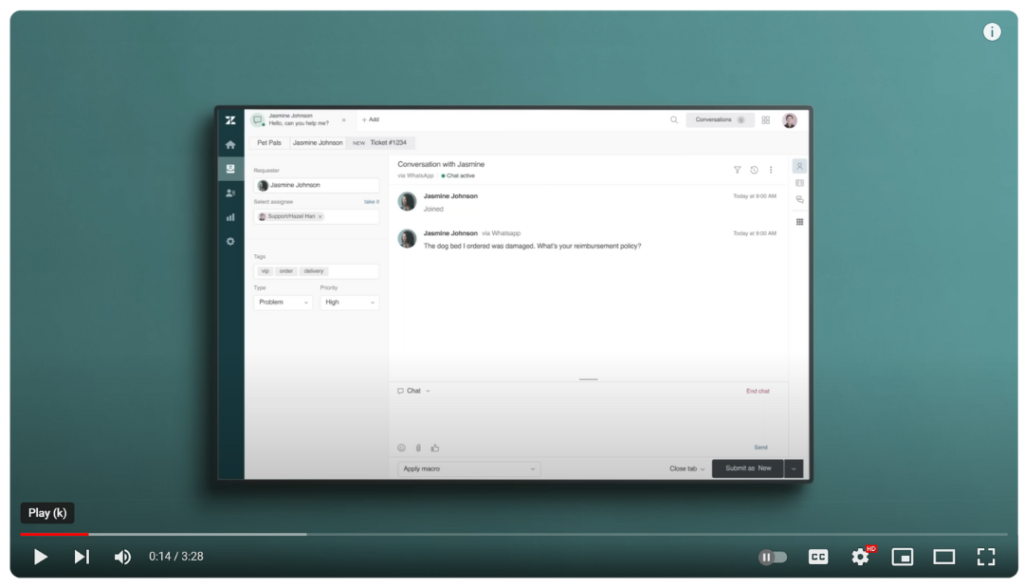As a B2B marketer, you are constantly looking for new and effective ways to reach your target audience and get your message across. One strategy that has become increasingly popular in recent years is video marketing. In this article, you will learn the power of B2B video marketing and how it contributes to the success of your B2B marketing campaigns with real-world examples.
Contents
What is B2B Video Marketing?
B2B video marketing is all about creating and sharing engaging video content to attract potential customers, increase engagement, and ultimately generate leads. This can range from short promotional videos to extended product demonstrations or thought leadership interviews.
Videos can be posted on various online platforms, such as websites, social media, emails, or even webinars. Most importantly, they should be easily accessible to your target audience and be a valuable addition to their online experience.
Benefits of B2B Video Marketing
As a B2B marketer, why should you invest in video marketing? Here are the important reasons:
1. Increased engagement with your brand
People are visually oriented and stay engaged with video content longer than textual content. Videos allow you to convey your message engagingly, increasing the likelihood that your target audience will be engaged.
2. Effective storytelling
Videos allow you to present complex information simply and engagingly. By using visual elements, sound effects, and voice-overs, you can tell stories that support your brand story and inspire your audience.
This is especially true for SaaS: you can’t put software in a box and ship it. You can’t touch it, so make sure you use video to convey what changes and solutions your SaaS can achieve.
3. Increased conversion
Videos have the power to evoke emotions and build trust, which increases the likelihood of visitors taking action, such as filling out a form or making a purchase.
According to Forbes, 59% of decision-makers prefer video over text when both are available on the same page (source, PDF).
Last but not least, Google loves video content and often prefers websites with embedded videos in search results. By adding relevant keywords to your video descriptions and subtitles, you can increase your website’s visibility and rank higher in search engines as part of your SaaS SEO strategy.
Dark Social Has Made B2B Video Even More Important
In recent years, people’s preferences have increasingly shifted toward visual and dynamic content. Just look at the ease with which we can now access video via Netflix or Disney+. Consumers are used to (snackable) video content.
In addition, an increasing part of the B2B customer journey takes place in dark social: in communities or on social networks such as LinkedIn. And social media platforms that promote short videos are on the rise, such as TikTok and YouTube shorts, for example. LinkedIn also likes to see videos on its platform.
The combination of the popularity of video and the role of dark social means that video marketing should be an essential component in your B2B marketing strategy.
6 Types of B2B Videos Every B2B SaaS Should Have
1. Short expert videos for thought leadership
These videos are designed to target the people who are not yet “in-market” to buy your product. You do this by gradually helping prospective buyers realize they have a problem. With this, these videos are part of your demand generation strategy.
This problem they knew they already had and just ignored OR a problem they didn’t even realize they had.
You do this by recording a monthly video in which the founder or a subject matter expert answers questions about their point of view and the challenges buyers/prospects face.
Here’s an example of one of our clients – you can find more video examples here.
2. Use case videos: how prospects can use your product
Once your prospects know they have a problem, they need to understand how your product can help them solve it.
The purpose of these videos is to show how each product feature can help your prospects navigate to the “dream outcome” and alleviate their big painful problem.
You do this by first identifying all your key product features. Then, next to each of those features, clearly explain what problem this feature solves. This forms the basis for your use case videos.
The simplest structure for creating these videos is to have the founder (or another subject matter expert) take a live screenshot of the specific feature and explain how it solves the specific problem.
Tip: Don’t immediately start the screen share at the beginning of the video. Begin your video by addressing the problem “Are you suffering from ….?” Only then show the functionality.

3. Case study videos
There is nothing more powerful than having someone else tell you about how successful your product is.
A good case study video adds a layer of credibility to your product and helps build trust in the eyes of your prospects that you deliver what you promise.
How do you get started? Make a list of companies you think would be suitable for a case study and approach them with the offer of a video interview.
You conduct these customer interviews in the same way as thought leadership interviews. Invite the customer to an online recording and during the interview, ask them a series of questions to show the pros and cons of implementing your solution. Also, during the interview, be sure to have them explain the situation before using your product and the situation after.
4. Product FAQ videos
You need to empower your customers to get the most out of your product, and product videos are the easiest way to do that.
The purpose of these videos is to increase the usage of your solution by answering the most common product-related questions customers have.
If all goes well, you probably already have a set of 5-10 product FAQs. Focus on those first. And as with use case videos, the structure of these videos can consist of a simple screenshot and an employee addressing the FAQs.
The importance of these videos is also reflected in research by Vidyard: 68% of B2B buyers prefer video over text for learning about a product or service in the awareness phase.

5. Product demo videos: highlight key features and benefits
Product demo videos play an important role in highlighting the key features and benefits of a product. My experience is not to make it a “button” video where you start explaining every feature and button.
Focus on the key problems your SaaS solves and the most commonly used features that can convince prospects to get started. Show this in a way that highlights the benefits of your SaaS very clearly.
6. Webinars
By offering webinars, you can share your expertise with your target audience and provide them with valuable information. This helps build trust and thought leadership and can also bring back prospects.
Also read: how short-form video content strengthens your B2B SaaS marketing
What is The Optimal Length For B2B Videos?
The length of a video can play an important role in holding your audience’s attention. Determining the ideal length for B2B videos depends on the purpose, target audience, and topic of the video.
The length of the video also depends on the channel of publication and the attention span of the audience. On platforms such as Instagram or TikTok, shorter videos may be more effective, while on YouTube or Facebook, longer videos may perform better. It is important to match the length of the video to the platform and audience expectations.
Below are my guidelines for the ideal length of B2B videos:
- Short expert content video for LinkedIn and YouTube shorts: 30 seconds to 3 minutes.
- Long B2B expert video for YouTube: around 10 minutes
- Use case video: up to 5 minutes
- FAQ video: 5 minutes
- Case video: 3 to 5 minutes
- Product demo: up to 10 minutes
- Webinar: 30 to 45 minutes

How Can You Implement B2B Video Marketing Successfully?
To apply B2B video marketing successfully, here are a few key tips you can follow:
1. Define your objectives
What do you want to achieve with video marketing? Do you want to generate more brand awareness, attract leads, or increase engagement? Define your goals before you get started.
2. Know your target audience
Before you start creating videos, it is essential to thoroughly understand your target audience. What are their needs, pain points, and expectations? Customize your video content to meet those needs and provide valuable information and solutions.
3. Create a content strategy
Plan what types of videos you want to create and on what channels they will be distributed. Think about the message you want to convey and how best to present it.
4. Invest in quality
While it is important to produce content quickly, quality should not be neglected. Make sure your videos are professional-looking and have good-quality sound.
And good quality doesn’t have to be expensive. For the expert videos we record with founders for authority marketing, we always recommend investing in a good (web) camera, microphone, and a ring light. Altogether this doesn’t have to cost more than $200.
5. Promote your videos
Even the best video won’t be effective if no one sees it. Promote your videos through various channels, such as social media, email marketing, or paid advertising to generate maximum exposure.
6. Measure and optimize
Keep track of how your videos are performing through analytics. Learn what works and what doesn’t so you can adjust your strategy for better results.
Conclusion
B2B video marketing is a powerful tool that B2B marketers can use to get their message across engagingly and effectively. Video marketing can help take your B2B marketing campaigns to the next level by increasing engagement, and conversions, and enabling effective storytelling.
By knowing your target audience well, creating concise, high-quality videos, and promoting them in the right way, you can increase engagement, boost conversions, and build relationships with potential customers. So what are you waiting for? Get started and discover the power of video for your B2B marketing strategy!